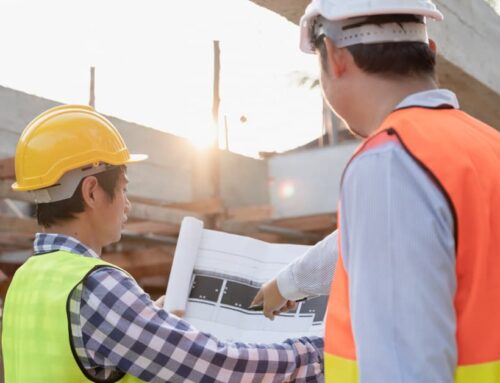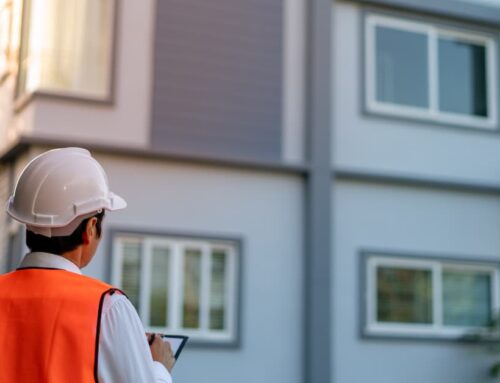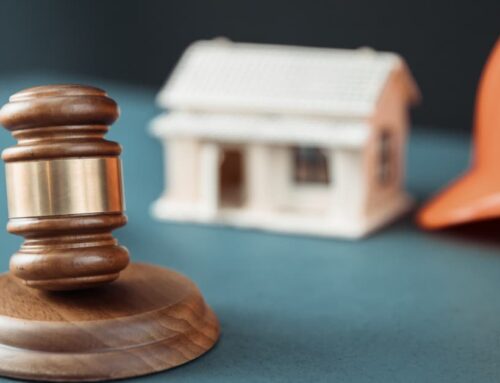Stop. Stop accepting subpar construction work that puts your investment at risk. If you’ve discovered cracks in your foundation, water damage from poor installation, or structural problems that shouldn’t exist in a quality build, you’re facing construction defects – and you have legal rights in Texas that can protect your property and financial future.
As someone who’s spent over fifteen years representing property owners in Central Texas construction disputes, I’ve seen how quickly construction problems can escalate from minor annoyances to major financial disasters. The difference between a successful resolution and a costly nightmare often comes down to one factor: how quickly you recognize the defects and take action to protect your rights.
What exactly qualifies as a construction defect? Any deviation from building codes, architectural plans, or industry standards that affects your property’s safety, habitability, or value. This includes everything from obvious structural failures to hidden problems like improper electrical work or inadequate waterproofing. The key is understanding that construction defects aren’t just cosmetic issues – they’re legal violations that entitle you to compensation and repair.
Because these cases often involve complex regulations and liability disputes, consulting with a qualified construction attorney can be critical to protecting your rights and maximizing your claim.
What Qualifies as a Construction Defect Under Texas Law
Construction defects fall into four main categories, each carrying different legal implications and potential damages. Understanding these categories helps you recognize when you have a valid claim and what type of evidence you’ll need to support your case.
Structural and Design Defects
Structural defects represent the most serious category. These include foundation problems, load-bearing wall failures, roof structural issues, and any defect that affects the building’s stability. I’ve handled cases where homeowners noticed small cracks that seemed insignificant, only to discover major foundation shifting that required tens of thousands in repairs. Structural defects often worsen over time, making early identification crucial.
Design defects occur when architects or engineers create plans that violate building codes or fail to meet safety standards. These defects exist before construction begins and affect the entire project. Common design defects include inadequate drainage systems, improper load calculations, and code violations that create safety hazards. Design defect cases require expert testimony to prove that the plans themselves were flawed.
Material and Workmanship Issues
Material defects involve the use of substandard or defective materials that fail to perform as expected. This category includes defective windows that leak, inferior roofing materials that deteriorate prematurely, and plumbing fixtures that fail repeatedly. Material defect cases often involve manufacturer warranties and require proving the materials were defective when installed.
Workmanship defects are the most common type I encounter in my practice. These occur when contractors or subcontractors fail to follow proper installation procedures or industry standards. Examples include improper electrical connections, inadequate insulation installation, poor plumbing work, and substandard concrete finishing. Workmanship defects can usually be proven through expert inspection and comparison to industry standards.
The Texas Residential Construction Commission Act provides specific protections for residential construction, while commercial properties fall under different statutes. Regardless of property type, Texas law requires contractors to provide work that meets industry standards and building codes. When they fail to do so, you have legal recourse.
Your Legal Rights in Texas Construction Disputes
Texas law provides robust protections for property owners dealing with construction defects, but these rights come with specific requirements and deadlines that you must follow to preserve your claim. Understanding your legal position before taking action can mean the difference between full recovery and losing your right to compensation entirely.
Warranties and Contractual Rights
The implied warranty of good workmanship applies to all construction projects in Texas. This means contractors automatically warrant that their work will be performed in a workmanlike manner, using materials that meet industry standards. This warranty exists regardless of whether it’s written into your contract. When construction defects occur, they represent a breach of this implied warranty, giving you legal grounds for recovery.
Contractual remedies provide your first line of protection. Most construction contracts include specific warranties and procedures for addressing defective work. These contractual rights often require written notice within specified timeframes and may mandate certain dispute resolution procedures. I always advise clients to review their contracts immediately when defects are discovered, as contractual deadlines are typically shorter than statutory limitations periods.
Statutory protection under Chapter 27 of the Texas Property Code governs residential construction warranties. New homes come with implied warranties covering structural defects, plumbing, electrical, and HVAC systems. These warranties typically last two years for major systems and one year for other components. Understanding which warranty period applies to your specific defects affects both your legal strategy and potential recovery.
Notice Requirements and Legal Procedures
Notice requirements are critical in Texas construction defect cases. Most situations require written notice to contractors, subcontractors, and material suppliers before filing suit. This notice must describe the defects specifically and provide an opportunity for inspection and repair. Failure to provide proper notice can bar your claim entirely, making early legal consultation essential.
The right to repair gives contractors and manufacturers the opportunity to fix defective work before you pursue legal action. While this might seem like a delay tactic, it often results in faster, less expensive resolution. However, you maintain the right to reject inadequate repairs and pursue legal action if the contractor fails to properly address the defects.
Damages available in construction defect cases include repair costs, temporary housing expenses, lost rental income, property value diminution, and attorney fees in many cases. The key is proving these damages resulted directly from the construction defects, which requires proper documentation and expert testimony.
How to Document and Prove Construction Defects
Success in construction defect cases depends heavily on the quality and completeness of your evidence. The documentation process must begin immediately when defects are discovered, as conditions can change and evidence can deteriorate or disappear entirely.
Essential Evidence Collection
- Photographic documentation – Take comprehensive photos from multiple angles, including wide shots showing the overall area and close-ups highlighting specific defects. Use a camera with date stamps, and take photos in good lighting conditions.
- Expert inspections – Hire qualified experts early in the process, ideally before notifying contractors of the defects. Structural engineers can evaluate foundation problems and load-bearing issues.
- Preserve all construction documents – including contracts, change orders, permits, inspection reports, and correspondence with contractors. These documents establish what work was supposed to be performed.
- Weather and environmental records – Can be crucial in cases involving water damage, foundation movement, or other defects that might be attributed to external factors.
Supporting Documentation and Records
- Maintenance records – Demonstrate that you properly maintained the property and didn’t cause or contribute to the defects through neglect.
- Financial documentation – Supporting your damage claims includes repair estimates, invoices for temporary fixes, hotel receipts if the property became uninhabitable.
- Timeline establishment – Proves when defects first appeared and how they progressed. Maintain a written chronology of when you first noticed problems.
The Construction Defect Lawsuit Process in Texas
Filing a construction defect lawsuit involves specific procedural requirements that vary depending on whether your property is residential or commercial. Understanding this process helps you make informed decisions about pursuing legal action and preparing for what lies ahead.
Pre-Lawsuit Requirements
Pre-suit notice requirements must be satisfied before filing any construction defect lawsuit in Texas. For residential properties, Chapter 27 of the Property Code requires a detailed written notice describing the defects, providing an opportunity for inspection, and allowing contractors to attempt repairs. Commercial properties may have different notice requirements based on contract terms or applicable statutes.
The inspection process typically follows your notice to contractors. Defendants have the right to inspect claimed defects with their own experts. This inspection phase can reveal additional problems while also providing defendants’ experts with the opportunity to develop alternative theories about defect causes. Coordinate these inspections carefully to ensure your interests are protected.
Filing and Discovery Process
Filing the lawsuit begins the formal legal process. Construction defect cases in Texas are typically filed in district court and involve complex technical issues requiring expert testimony. The petition must specifically describe each defect, identify responsible parties, and state legal theories supporting your claims. Proper pleading at this stage is crucial for preserving all potential remedies.
Discovery allows both sides to gather evidence and expert opinions. This phase includes document production, depositions of contractors and property owners, and expert witness disclosure. Discovery in construction cases can be extensive, as technical issues require detailed investigation. Expect this phase to last several months to over a year, depending on case complexity.
Expert witness requirements are critical in construction defect litigation. Texas courts require qualified experts to establish the existence of defects, causation, and damages. These experts must have appropriate credentials and experience with the specific types of construction involved in your case. Expert testimony often determines case outcomes, making expert selection crucial.
Resolution Options
Settlement negotiations occur throughout the litigation process. Most construction defect cases settle before trial, often after discovery reveals the strength of each side’s position. Settlement can provide faster resolution and avoid trial risks, but requires careful evaluation of offered terms against potential trial outcomes.
Trial preparation for cases that don’t settle involves extensive coordination between attorneys and experts. Construction defect trials often require demonstrative evidence, site visits, and detailed technical testimony. Trial outcomes can vary significantly based on jury reactions to technical evidence and expert credibility.
When to Contact a Construction Defect Attorney
Timing is everything in construction defect cases. Contact an experienced construction defect attorney immediately when you discover problems – before notifying contractors, before hiring repair companies, and definitely before signing any settlement agreements or releases.
Urgent Situations Requiring Immediate Legal Help
Immediate consultation is essential when defects affect structural integrity, create safety hazards, or cause ongoing damage like water infiltration. These situations require immediate action to prevent worsening conditions while preserving your legal rights. Waiting can result in additional damage that becomes your responsibility rather than the contractor’s.
Before providing written notice to contractors, consult with an attorney about proper notice procedures and content. Inadequate notice can bar your claims entirely, while properly drafted notice preserves all your legal options. An experienced attorney ensures your notice complies with statutory requirements and contract terms.
When Contractors Resist or Deny Responsibility
When contractors deny responsibility or offer inadequate repairs, legal representation becomes necessary. Contractors and their insurance companies have experienced attorneys protecting their interests. You need equal representation to evaluate their offers and negotiate a fair resolution or pursue litigation when necessary.
If you’re considering accepting a settlement offer, have an attorney review the terms before signing anything. Settlement agreements typically include releases that bar future claims, even if additional defects are discovered later. Understanding what you’re giving up is crucial to making informed decisions.
When dealing with insurance issues, attorney guidance can be invaluable. Construction defects may be covered under your homeowner’s insurance, the contractor’s liability insurance, or manufacturer warranties. Navigating these insurance claims while preserving your legal rights requires careful coordination.
At Kelly Legal Group, I’ve spent over fifteen years helping Central Texas property owners resolve construction defect disputes. I’ve seen how quickly these cases can become complex and how important early legal guidance is for protecting your investment. Whether you’re dealing with foundation problems, water damage, or any other construction defect, I can help you understand your rights and develop a strategy for resolution.
The construction industry in Austin and Central Texas is booming, but not all contractors maintain the standards your investment deserves. When you discover construction defects, you’re not just dealing with repair costs – you’re protecting your property value, your family’s safety, and your financial future. Don’t face these challenges alone.
Take action now: Document the defects, preserve your rights, and get experienced legal guidance. Construction defect cases have strict deadlines and technical requirements that can’t be ignored. Contact Kelly Legal Group today for a consultation about your construction defect situation. Together, we’ll evaluate your case, explain your options, and fight for the compensation you deserve.
Your property represents a significant investment. When construction defects threaten that investment, you need an attorney who understands both the legal and technical aspects of construction disputes. Let my experience work for you – contact Kelly Legal Group and take the first step toward protecting your rights and your property.






